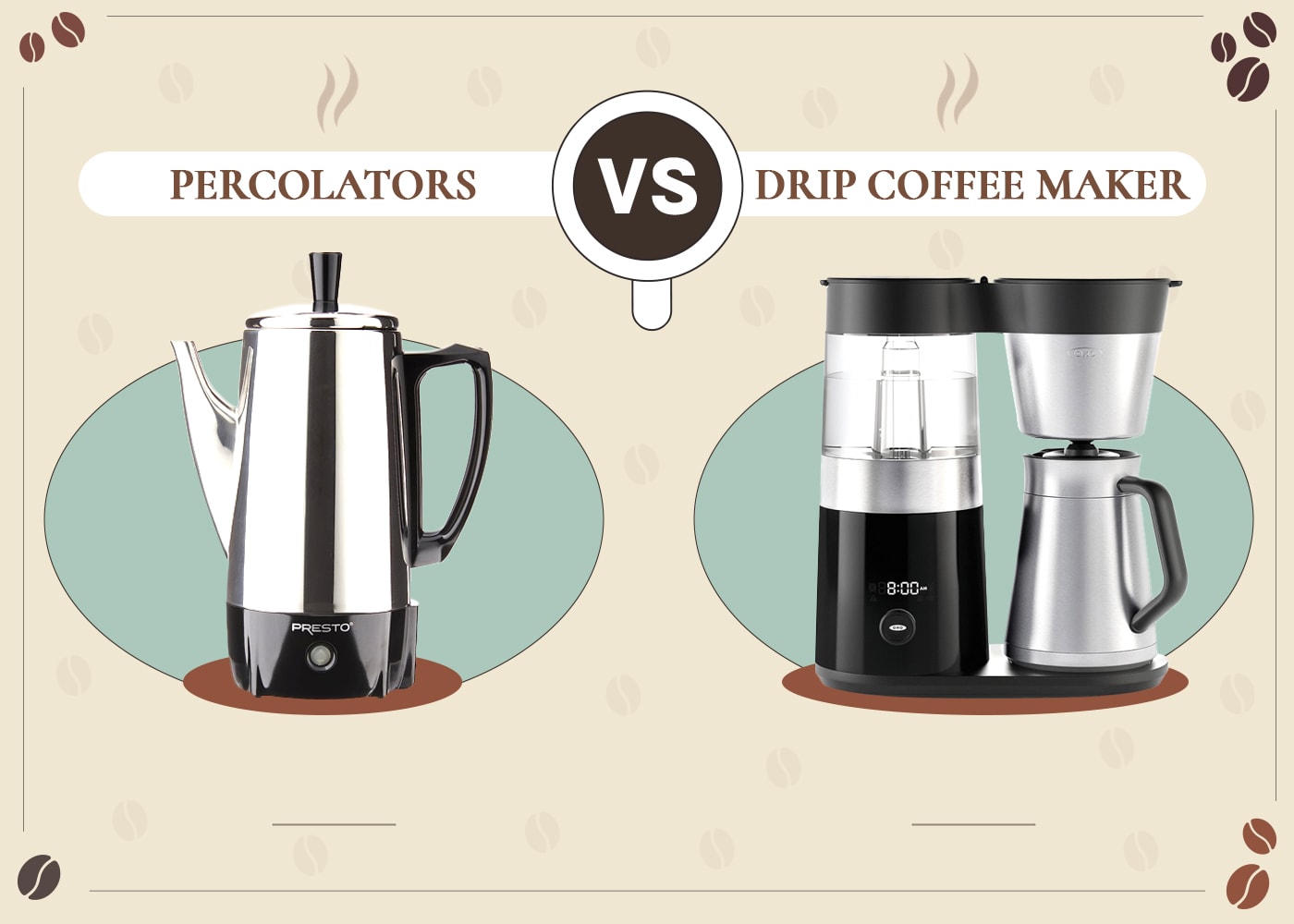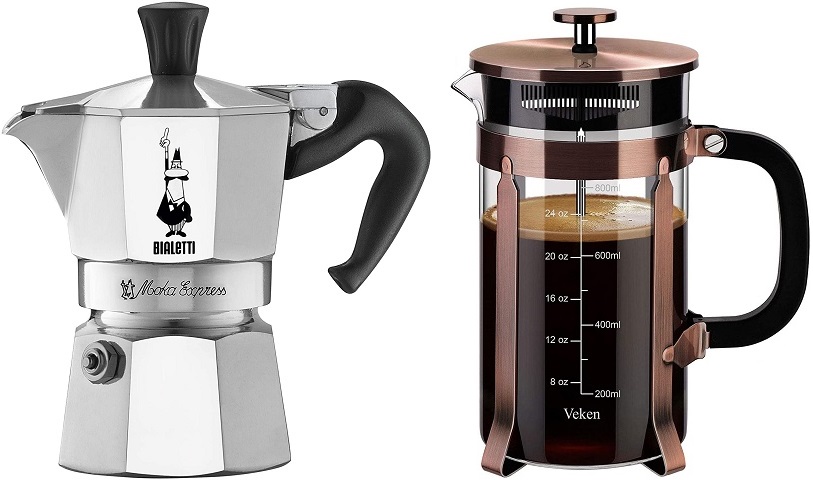
There are many ways to brew coffee, and the two that are most recognized for creating bold and full-flavor coffee are the Moka pot and the French press. Hailing from Italy and France respectively, these brewing methods are steeped — no pun intended — in centuries of tradition and coffee culture. But which one is better?
Below, we’re going to compare the Moka pot to the French press in ease of use, convenience, and overall performance so that you can choose which method is best suited for getting your caffeine fix each morning!

Moka Pot Overview
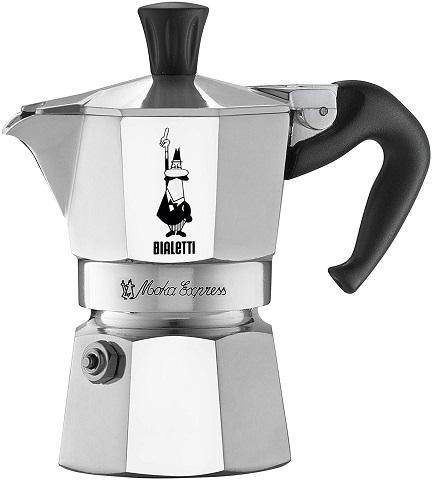
A Moka pot is a small, metal, stove-top brewer that usually consists of three parts: the bottom piece that gets heated and holds the water, the filter basket that holds the coffee grounds, and the top piece to hold the brewed coffee. The top section also contains a spout to release steam.
Water in the bottom piece gets heated and expands up into the ground coffee as steam. The coffee gets saturated but continues to heat, and as the water builds up in the grounds basket, it also heats to steam and passes up through the spout into a second reservoir for finished coffee.
What It’s Good for/When to Choose
A Moka pot is best for those who want something similar to a cup of espresso in the morning without having to fuss with a complicated espresso machine. Moka pots use very basic and non-mechanical pieces to deliver bold coffee that often rivals espresso, but it’s important to note that the finished product isn’t authentic espresso. It is similar, though, so you can use the coffee it makes to create mixed drinks like you would with espresso.
Moka pots have some serving limitations. Depending on the Moka pot you choose, you’ll only be able to make between one and six cups of strong coffee at a time. This smaller brewing capacity may be convenient if you’re only making coffee for yourself, but brewing some for family or friends may take significantly longer, as you’ll have to make several batches.
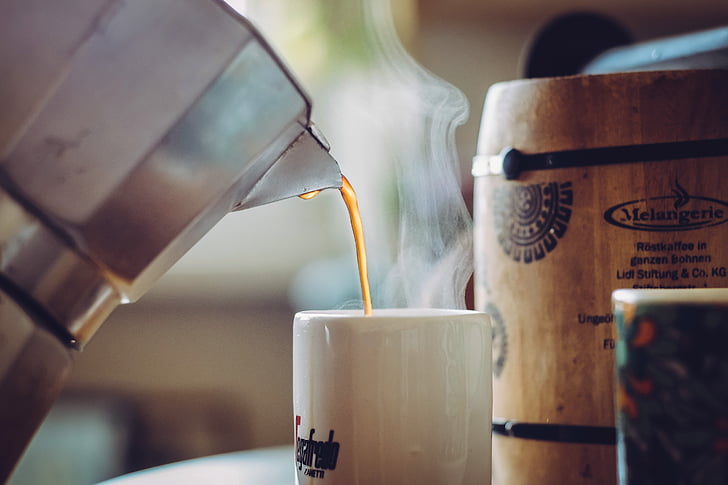
Moka pots also aren’t adaptable at all when it comes to the quantity they produce. The quality of the coffee they make plummets if you try to make fewer than six cups in a six-cup Moka pot. When choosing your Moka pot, you’ll have to pick one that makes the quantity you want, and you’ll be limited to that quantity for all brewing sessions.
Moka pots are very cheap, and the only ongoing cost will be your coffee. They don’t use disposable filters, and they have no ongoing maintenance.
Moka pots are a bit simpler to brew with than French presses. They can easily be brewed using volume measurements instead of mass, so you won’t need a scale to weigh out coffee and water. They make very concentrated coffee, so small variances in ingredient volumes won’t produce too much variation in your coffee quality.
Lastly, Moka pots are more difficult to clean, as the spout isn’t accessible, and the water and coffee reservoirs are smaller than a French press and can be challenging to reach with a sponge.
Ready to buy a Moka pot? Read our reviews of the 10 best models!
- Makes flavorful coffee
- Makes robust coffee
- Very affordable
- Simpler to brew with
- Limited to one quantity of coffee
- Often have small serving sizes
- Harder to clean

French Press Overview

The French press is a straightforward brewing apparatus that consists of a carafe and a plunger that fits snugly inside the carafe. Typically, the plunger is made up of four pieces: a lid with a shaft that extends to the bottom of the carafe, a rigid metal plate with holes to allow coffee to flow through, a fine metal mesh that is too small for coffee grounds to flow through, and a rigid bottom piece that screws onto the shaft and keeps the rest of the filter together.
To brew, you add coffee grounds and very hot or boiling water to the carafe, wait for the coffee to finish brewing, and then use the plunger to push all of the grounds down to the carafe’s bottom.
What It’s Good for/When to Choose
A French press is perfect for someone who wants full-flavored, bold coffee that can be brewed in relatively large quantities without much experience. It’s a simple brewing method, so it’s suitable for anyone willing to learn a simple recipe and wants delicious coffee every morning. And you can even choose portable, camping-friendly models!
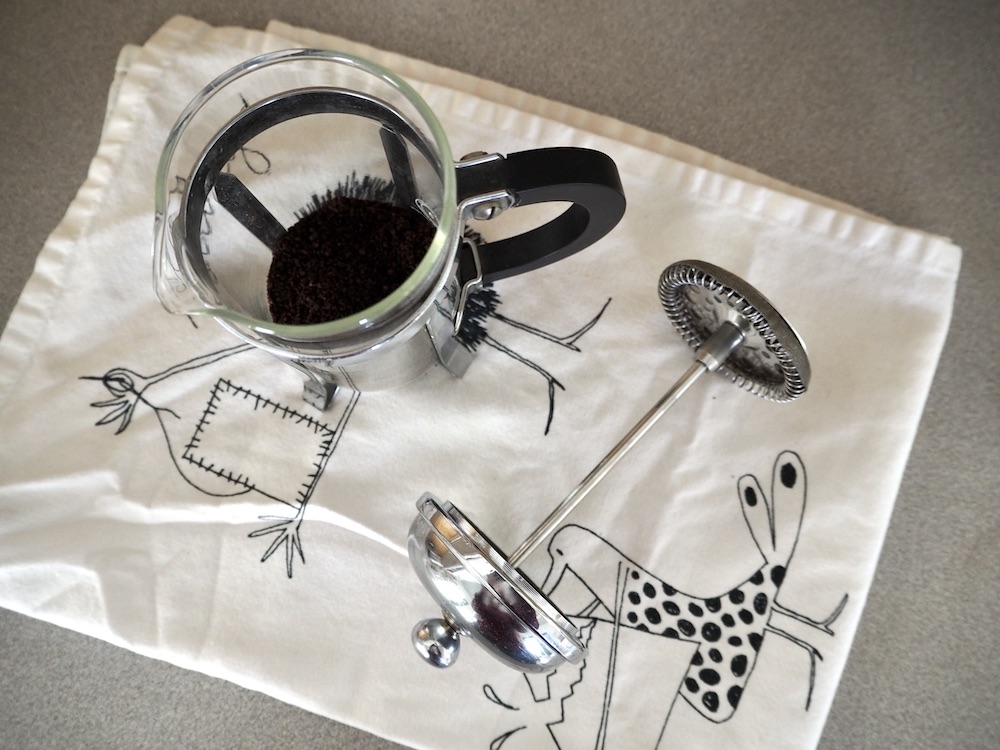
French presses come in different sizes, but even the smallest models can usually make around four or five cups of coffee. The larger French presses can make up to 10 or 12 cups, so they’re great for making larger batches when you have company over.
Regardless of what size French press you choose, you’ll be able to make any quantity up to its maximum batch size. For example, even if you purchase a 12-cup French press, you can still make two cups of delicious coffee without compromising quality. This adaptable batch size makes them more convenient if you make varying amounts of coffee each day or on occasion.
French presses are about the same price as Moka pots, and they also contain no mechanical or electrical parts, so they have no ongoing maintenance aside from regular cleaning.
To get the best coffee experience from a French press, you should aim to measure coffee and water volumes with a scale. A 15:1 ratio of water to dry coffee is a good recipe, but even changing that to 14:1 or 16:1 can create significant differences in flavor. The coffee’s quality and taste will be a bit higher from a French press if properly used, but it takes a bit more precision. Want to make it easier? Try our coffee to water ratio calculator!
French presses are very easy to clean, as the carafe is wide-mouthed and easily washable, and the plunger pieces come apart for easy cleaning. Each piece is even machine washable, so cleaning could be effortless!
Ready to buy a French press? Choose from our 10 favorite models!
- Makes full-flavor coffee
- Can make larger batches
- Batch size is adjustable
- Affordable
- Easy to clean
- Requires more precision
- Not suitable for espresso-based drinks

What Kind of Coffee Do You Like?
The main idea for these two brewing methods is the same in that hot water is exposed to coffee grounds, but the resulting coffee is very different.
Moka pots produce robust coffee both in taste and caffeine, and the coffee they make is more similar to espresso than it is to regularly brewed coffee. Moka pot coffee can be used in place of espresso in mixed drinks like cappuccinos or cafe au laits, or it can be consumed black for a bold and robust flavor.
The French press makes regular coffee that is weaker in caffeine content by volume, but it will still be delicious. The flavor profile of French press coffee can be more complex, so if you’re looking for control over how your coffee tastes and some ability to experience more tasting notes, the French press is probably better for you.
SEE ALSO: Everything You Need to Know About French Coffee
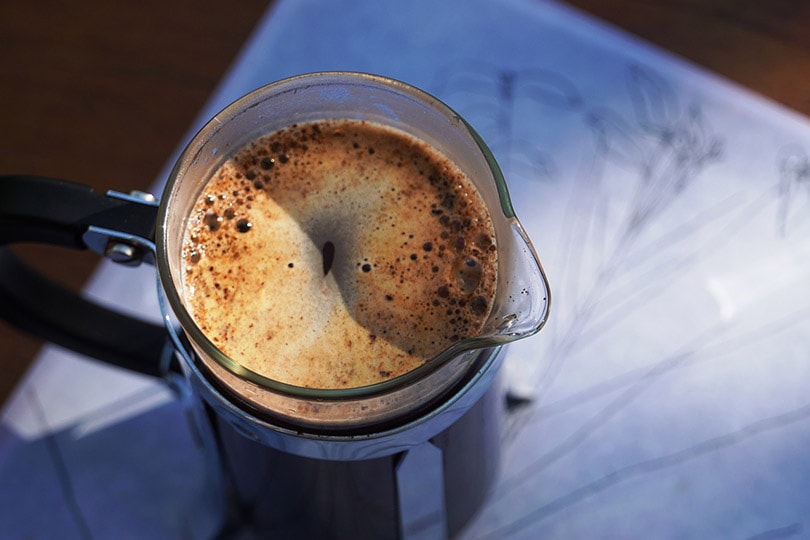
Volume
One significant difference between these two methods is the quantity of coffee produced.
Moka pots come in different sizes, but even the largest ones can only make around six cups of coffee. On the other hand, French presses come in sizes that are suitable for up to around 12 cups of coffee. A French press will suit you better if you usually make larger batches for multiple people at a time.
Volume adaptability is another crucial factor. Moka pots have a fixed volume, so the size you purchase will dictate the exact quantity of coffee it can make. With a French press, you can make the maximum quantity or any smaller quantity without sacrificing quality. If you want the option to make different volumes of coffee at different times, a French press is better for you.

Convenience
Lastly, you’ll need to consider the convenience that each method provides regarding cleaning and ease of use.
French presses are easier to clean, as all pieces come apart, are easily accessible, and are machine washable. On the other hand, a Moka pot has parts that are difficult to reach with a sponge and others, like the spout, that are inaccessible. These smaller areas on the Moka pot make them harder to clean.
French presses are also a bit more finicky when it comes to a recipe, and quantities of coffee grounds and water should be measured by mass for the best results. Moka pots are a bit more forgiving and can usually be measured by volume, which is more convenient for most people.


Moka Pot vs French Press: Which is Right for You?
The method that’s best for you is the one that suits your needs the best! Different people have different tastes and coffee requirements, so you’ll need to choose which method best fits your daily routine and lifestyle.
If you want easily brewed, strong coffee, don’t mind being locked into one volume of coffee and would like the ability to make some mixed coffee drinks, a Moka pot will probably serve you best. If you want to taste nuanced flavor profiles, the ability to produce variable volumes, and want the most effortless cleaning process, a French press will be perfect for you.
Ultimately, only you can decide which method is right for you! Hopefully, this comparison has helped you figure out which brewing apparatus will be best for your needs.
See also:






